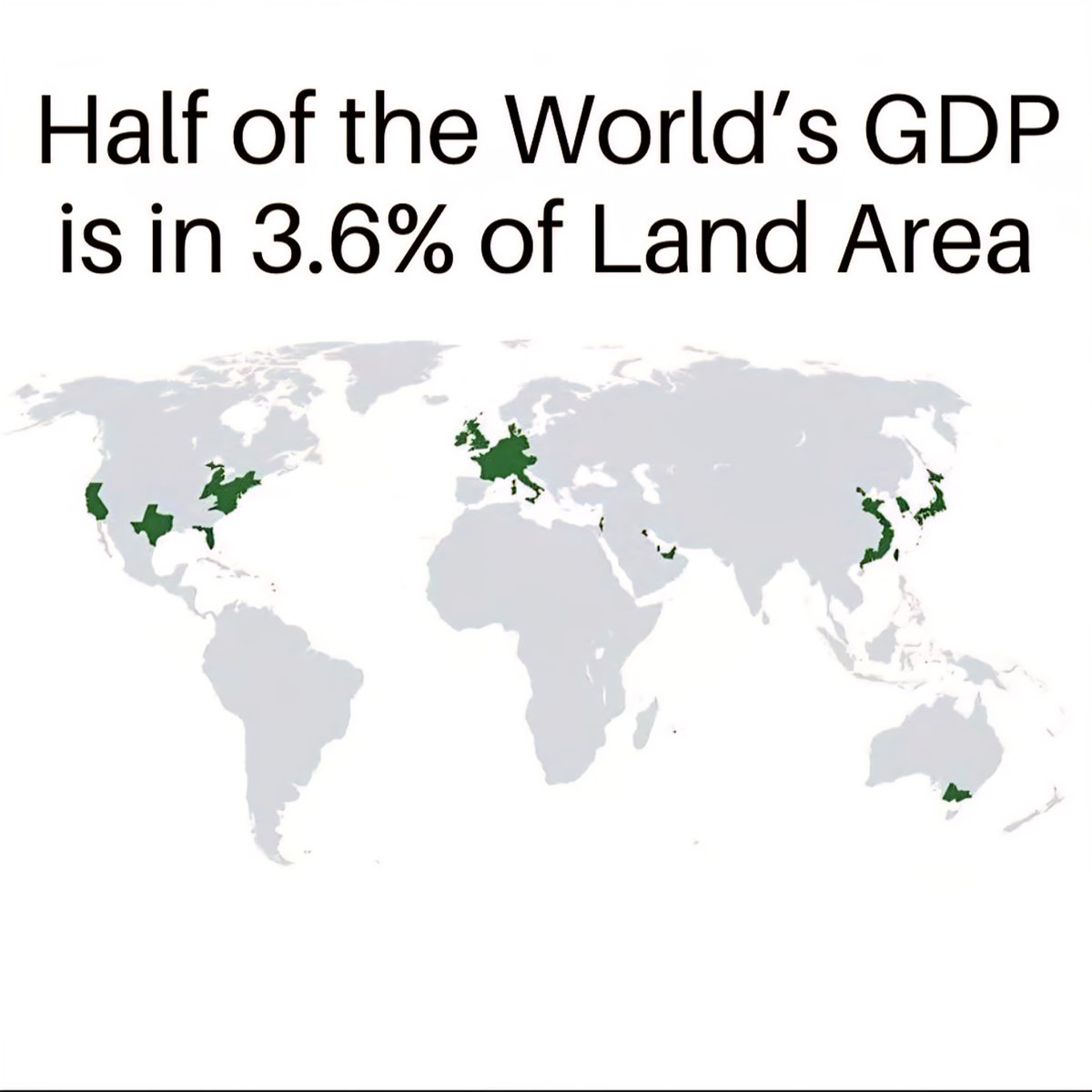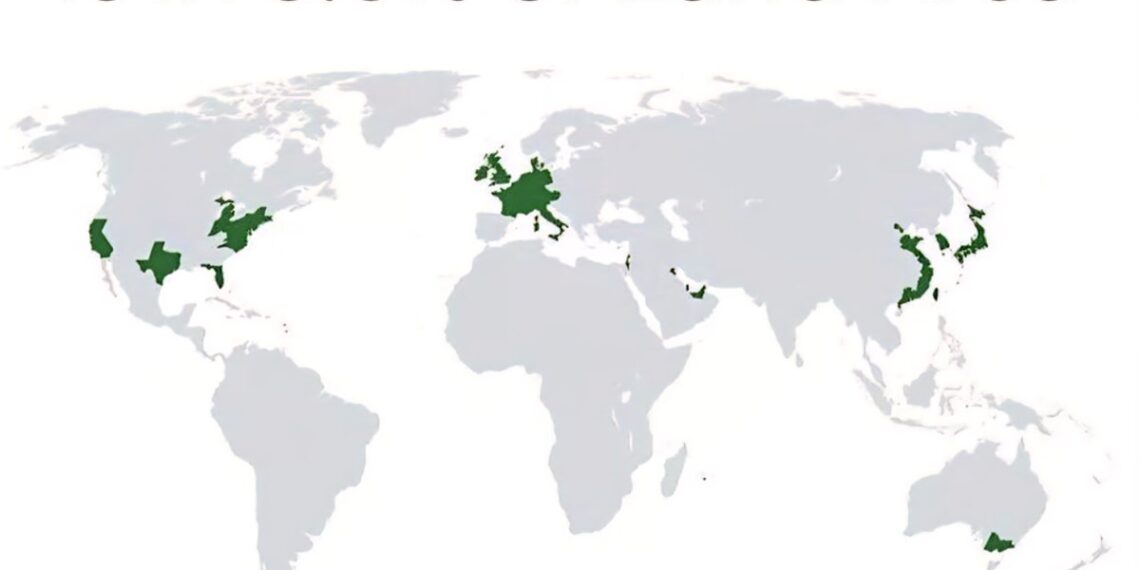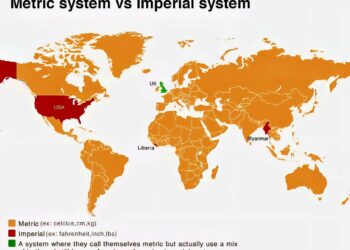Select Language:
Surprising Economic Disparities Revealed

1. A Small Fraction Holds the Majority of Wealth
In a startling revelation for 2025, studies show that approximately 3.6% of the world’s landmass is responsible for generating nearly 50% of the global GDP. This stark imbalance underscores the extensive concentration of economic power within a tiny fraction of the planet’s surface, highlighting stark regional disparities.
2. Major Powerhouses Dominate the Economy
The regions accounting for this small land area include some of the wealthiest metropolitan and industrial zones—such as parts of North America, Western Europe, and East Asia. These areas house major financial hubs like New York City, London, and Tokyo, which serve as global economic engines. Their dense populations of innovation, infrastructure, and financial services propel a disproportionate share of global economic activity.
3. Urbanization as an Economic Catalyst
Major urban centers within these regions have become vital to global wealth accumulation. The concentration of technology firms, multinational corporations, and financial institutions fuels rapid economic activity, further widening the gap between these zones and less developed regions. Over the past decade, urbanization has amplified the economic divide, leaving remote and rural areas far behind.
4. The Role of Infrastructure and Investment
Part of what makes these regions so economically dominant is their extensive infrastructure—state-of-the-art transportation, reliable energy grids, and advanced digital connectivity. Heavy investments in education and innovation also play crucial roles. These advantages attract global talent and business, further reinforcing their economic supremacy.
5. A Growing Divide Between Haves and Have-Nots
The stark contrast between these high-GDP land areas and the rest of the world perpetuates global inequality. While these regions enjoy robust economic growth, many other parts of the world grapple with poverty, limited infrastructure, and fewer opportunities. This divergence threatens worldwide stability and calls for targeted policy solutions.
6. Sustainable Development Challenges
The disproportionate concentration of wealth raises sustainability concerns. Overcrowding, pollution, and resource depletion are intensified within these economic hubs. Meanwhile, underdeveloped regions suffer from neglect, exacerbating social and environmental issues. Addressing this imbalance requires international cooperation and innovative solutions.
7. Policy Implications for a More Equitable Future
Experts advocate for policies encouraging investment in underserved areas, infrastructure development, and fair taxation. Promoting economic diversification away from overstressed urban centers can help distribute prosperity more evenly. Additionally, global initiatives focused on education and technology transfer could empower less developed regions.
8. The Future of Global Economic Disparity
With ongoing technological advancements and shifting geopolitical dynamics, the landscape of global wealth distribution may evolve by 2025. Emerging economies are aiming to capture more of this economic activity, but systematic challenges remain. For real change, coordinated efforts are necessary to bridge the economic gap created by geographical and infrastructural disparities.
Each of these points underscores a fundamental truth: the concentration of wealth and productivity in a tiny fraction of the world’s land is both a reflection of development patterns and a challenge for global equity. Moving forward, addressing this imbalance will be crucial for sustainable, inclusive growth worldwide.






